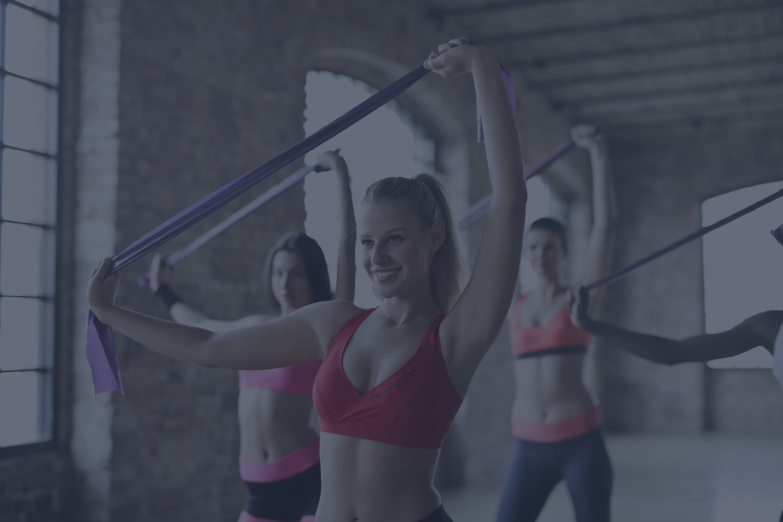
Performing deadlifts using resistance bands in place of weights is a perfect introduction to this type of training and is ideal for those who are not ready to take on the barbell or who have limited equipment available. Even expert and professional weightlifters incorporate resistance band training into their program.
It's an ideal way to keep up your training when you're away from the gym. All you need is a resistance band so that you can complete the exercise in a park, hotel room, or even at the beach. Anywhere where you might not have access to bars and weights!
To introduce some variation in the difficulty of the exercise, you should look into acquiring a set of variable resistance bands. These will allow you to switch up the load on your muscles as your training develops, or drop to a more comfortable resistance if you want to increase your reps for toning. A set of pull up assist bands with varying resistance is ideal, giving you numerous options whether you use them alone or in combination with one another.
How to do a deadlift with resistance bands.
The correct method to complete a resistance band assisted deadlift is as follows:
Make sure to select the appropriate band or combination of bands for your current ability before you begin!
- Start by placing your feet shoulder-width apart. Your toes should be pointing forward on the floor with the band running beneath between the heel and arch.
- Hold the band in an overhand grip so that your knuckles are facing outwards and away from you. Your hands should be slightly less than shoulder-width apart.
- Now, bend at the knees, moving your hips backward, keeping your chest up while maintaining balance and good posture. This is your starting position for the deadlift.
- To lift, contract your glutes, pushing them forward with full force. Don't strain your back by leaning up or down. Your glutes should be doing the majority of the work here as they remain fully contracted.
- Pause at the full extent of the lift for a moment, holding the position. Your abs and lats should be working to stabilize you.
- Then, release slowly, returning smoothly to the starting position.
A variation on the resistance band deadlift.
The straight leg deadlift is another version of this movement. The band position and the starting position is the same in this variation; however, your knees should be more straight, rather than slightly bent. Hence the name.
- Keep the legs stiffened during the lift, which will stretch and exercise your upper leg muscles to a greater extent. Tighten your abs and squeeze your glutes.
- As you lift, you should keep your shoulder blades locked together to ensure your back remains straight during the lift.
As you improve your technique on how to deadlift over time, you'll naturally want to move from banded lifts to lifting weights. The methods you've learned while using the resistance band will help you get to grips more quickly with the barbell deadlift, but also you can return to the banded method to address specific areas of your form, which might need adjustment or improvement.
What muscles do banded deadlifts target?
This exercise is similar in scope to a classic deadlift, targeting major muscle groups in the mid and lower body. The core muscles are central to this exercise, as well as the lats and lower back muscles. Also, resistance band deadlifts work on the hamstrings and glutes, providing a comprehensive training session that builds strength and stability.
Each variation targets slightly different deadlift muscles. The bended knee version typically focuses on the glutes and upper thighs, while the straight leg deadlift targets the lower back( without straining it) and the glutes.
What techniques does the exercise train?
As well as targeting and training specific muscle groups, deadlifting with resistance bands allows you to work on elements of your form and technique which can then be transferred across to deadlifting with heavier weights. It's a lower risk way of perfecting these elements of the exercise before moving on to the barbell by carrying less probability of injury, which makes it ideal for beginners or for experienced lifters who want to improve or correct a specific aspect of their form.
Specific elements of form which this type of deadlift can improve upon include the following:
- Acceleration of the bar throughout the lift, moving from the mid position through to the top position.
- Developing and maintaining the strength you need during the lockout.
- Honing and enhancing your movement, improving smoothness and steadiness.
- Training your core and laterals to support your form throughout the lift.
Deadlift with bands final thoughts
As with any weight training, the correct form is vital to avoid sudden or long term injuries, and using a resistance band is the best and safest way to develop these skills and keep your deadlift muscles worked out while doing so.
Tone and tighten while creating a perfect form with these variations of the weighted deadlift. Avoiding injury is one of the top priorities for athletes and weight lifters and what better way to achieve this goal. Also, the use of resistance bands makes this an easy workout to include in your 'on the go' workout routine
Add this set of exercises to your regime, and watch your form and technique improve by leaps and bounds while you continue to build muscle in the process!









Leave a comment (all fields required)